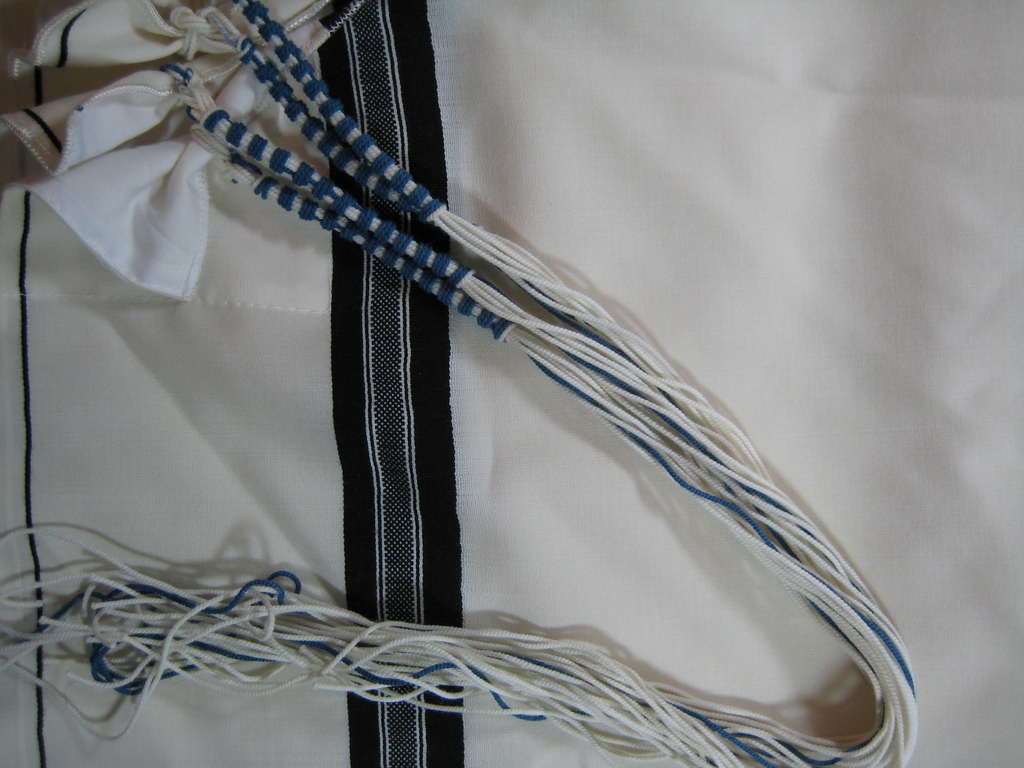Judaism's mysterious blue snail
Telling the story behind tekhelet
By Malka Eisenberg
Issue of Dec. 25, 2009 / 8 Tevet 5770
It was almost Indiana Jones and the Quest for the Holy Snail.
Dr. Ari Greenspan, dentist turned explorer, recently led a roomful of men and women on a verbal trip that spanned the coasts of Acco to Vatican City to the fish markets of the Rock of Gibraltar on a search for tekhelet, Judaism’s legendary blue dye.
Greenspan is the founder of P’til Tekhelet, the Association for the Promotion and Distribution of Tekhelet in Jerusalem, and one of the men responsible for the resurgence of the use of the dye. He spoke in the Young Israel of Woodmere as part of its ongoing adult education series.
Greenspan began with a short history of the tekhelet. According to the Talmud, the tekhelet is similar to the grasses by the coast, which is similar to the blue of the sea, which in turn is similar to the sky. The sky, the Talmud explains, is the same color as the throne of Hashem. The snail used for the dye was found along the
Mediterranean coast from Haifa to Tyre. All three members of the snail family exist and all produce the secretion that creates the blue dye of tekhelet and the purple of argamon. Many archeological sites along the Mediterranean have evidence of the dyeing process including large fields deep with snail shells and dye remnants.
Much of the dye in Solomon’s time came from Tyre, and coins from the city have an image of the snail on them. After the destruction of the Second Temple, when many Jews left Israel, Rome made it illegal to wear tekhelet, reserving the color for Caesar and other political dignitaries. The dye became difficult to obtain and by the fourth century CE was almost completely unavailable.
In the 1800’s the Radzyner Rebbe, Rabbi Gershon Henoch Leiner, set out to determine the source of tekhelet on his own; he focused on the cuttlefish, a squid that secretes an ink-like substance. Leiner had difficulty producing the dye and enlisted the aid of a chemist. Ten thousand of his followers began wearing the blue threads on their tzitzit.
In 1913, Rabbi Isaac Herzog, Chief Rabbi of Ireland and later Chief Rabbi of Israel, wrote a doctoral thesis on Hebrew Porphyrology (the study of purple). When he tested the Radzyner dye he discovered that it was a synthetic dye, known as Prussian Blue. He realized that the murex trunculus was probably the tekhelet. Much of the Radzyner chassidus was wiped out in the Shoah, but Rabbi Herzog passed his records of the dye process on to the surviving chasidim in Israel.
About 18 years ago, not long after he made aliyah, Greenspan went scuba diving with other colleagues to search for the snail.
“It was an adventure,” he said. “We didn’t know we’d be re-instituting the ability to wear tekhelet.”
Greenspan found the snail but was unable to harvest it in meaningful quantities, since it is protected under Israeli law. Greenspan’s adventures continued with a call to a French fish market, a visit to Spain and finally to Croatia where he found a source of snails. Greenspan also visited the Vatican to see if garments worn by popes in the Middle Ages had tekhelet on them, as suggested by the Rambam — though any remnant of the dye had decayed centuries before he arrived. The Vatican did have a poster describing the dye from the mollusk.
The process of creating the dye involves catching the murex trunculus, breaking its shell and removing a white gland. The fluid from the gland is clear and colorless but when exposed to light transforms to yellow, then green, then blue then deep purple. The fluid is air-dried into a powder then added to water; a process that Greenspan demonstrated during his lecture.
In ancient times lye was used to make the dye basic; Greenspan uses another chemical. Old urine was used as a reducing agent and in ancient times collecting urine was a major part of the dyeing industry. After adding some acid to make the dye less basic, Greenspan submerged a wad of wool in the liquid and let it sit a while. When he removed the wool, the color changed quickly to purplish-blue argamon. Greenspan said that they’d accidentally discovered the blue tekhelet color when the dye bath was left in the sun; the dye turned wool blue rather than purple.
The current Ashkenazi method for tying tzitzit, Greenspan explained, is in memory of the way it was done when we had tekhelet. The Rambam says that only one half of one string should be blue, the Ryvid holds one of four, and Rabeinu Tam two of four strings.
“Rabbi Dr. Moshe Tendler and Rabbi Hershel Schachter wear tekhelet. Rabbi Lichtenstein does not since Rav [Joseph B.] Soloveitchik did not support doing so at the time,” Greenspan said.
Greenspan noted that a fake tekhelet from the indigo plant, used in the time of the Mishna, is the same color and is chemically identical to the snail-based dye, though the snail-based dye has two extra bromides from which argamon is derived. Only the animal-based color is halachically permissible for tzitzit.
Greenspan concluded the lecture by explaining that people’s perception of color and wavelengths is measured in nanometers. Color absorbs certain wavelengths of light and reflects back certain wavelengths — we perceive the reflected wavelengths as the color of the object, measured in nanometers.
The tekhelet molecule absorbs light at 613 nanometers, the number of the mitzvot in the Torah.
More information is available at www.tekhelet.com.
Questions or comments? E-mail Malka Eisenberg at newsroom@thejewishstar.com

 65.0°,
Mostly Cloudy
65.0°,
Mostly Cloudy 







